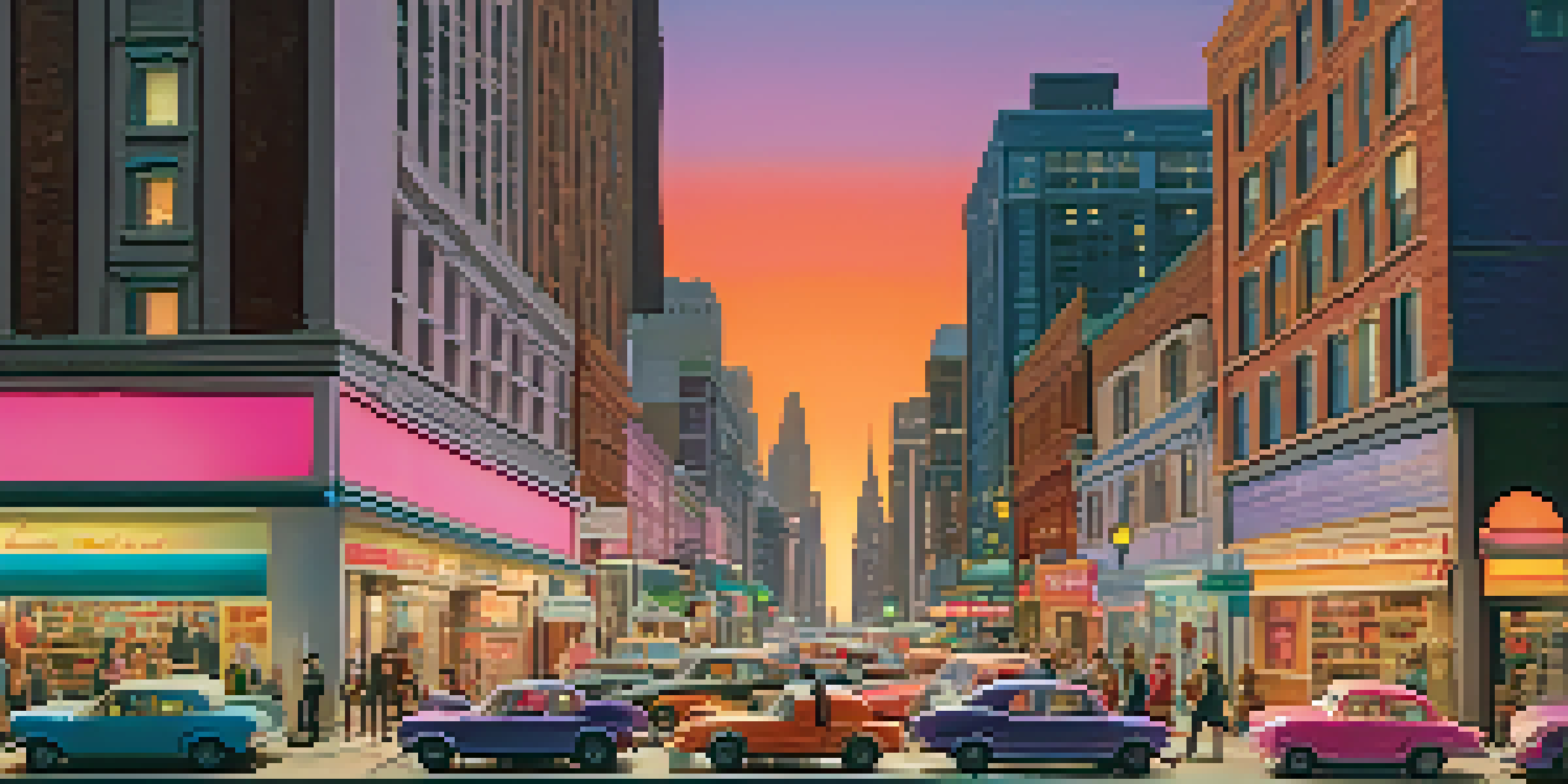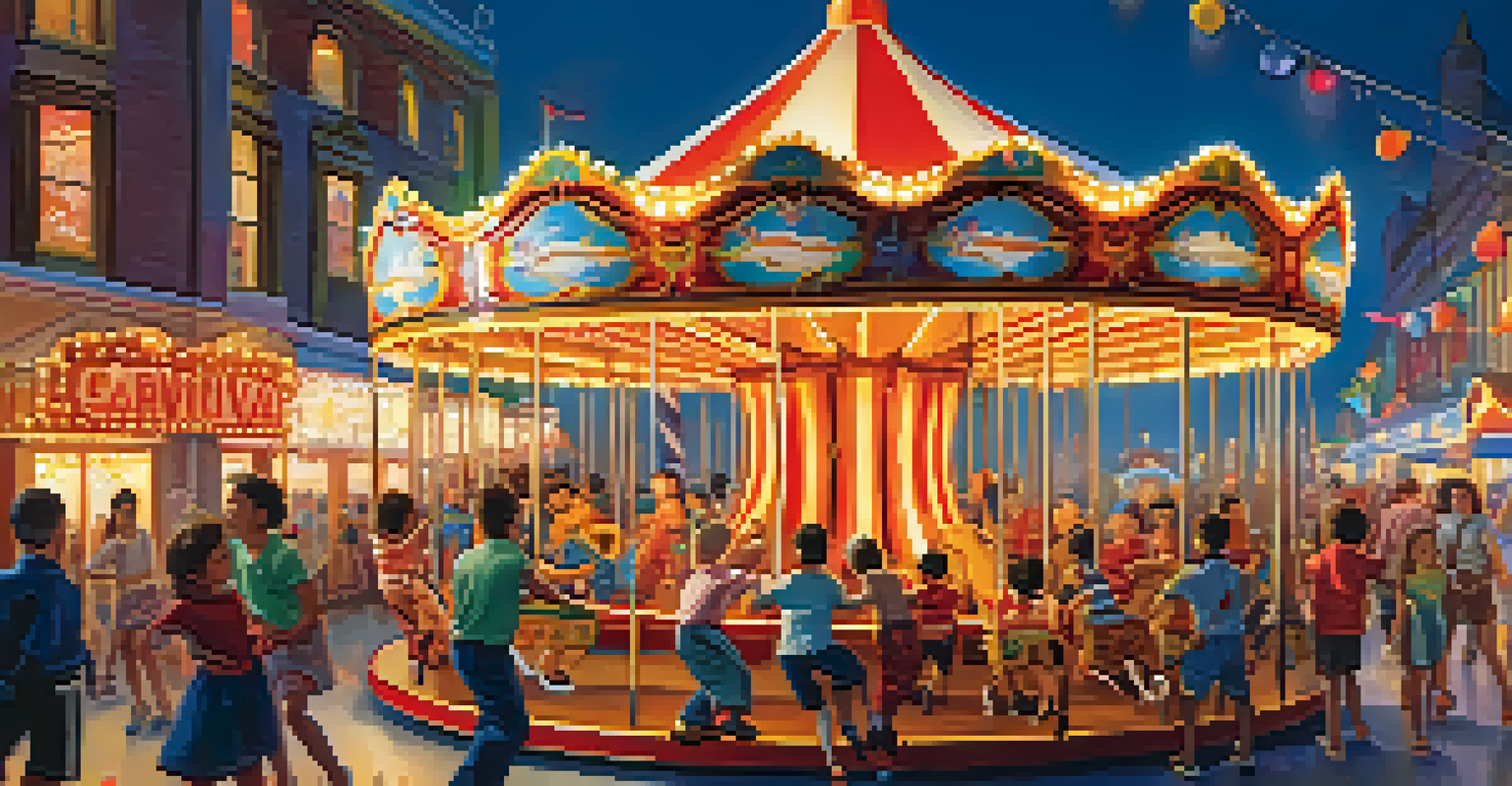Creating Dynamic Landscapes: Movement and Action in Models

Understanding Dynamic Landscapes in Model Making
Dynamic landscapes in model making refer to the art of adding movement and action to static models. Think of a diorama of a bustling city, where cars seem to zoom by and people appear to stroll along sidewalks. This concept transforms a simple model into an engaging experience, captivating viewers and encouraging interaction. By integrating movement, you can create narratives that draw the audience into the scene, making it feel alive and relatable.
Art is not what you see, but what you make others see.
Imagine a model of a forest where the trees sway gently in the wind or a miniature river that flows smoothly. These elements not only enhance the aesthetic appeal but also evoke emotions and memories associated with real-life landscapes. The goal is to create a scene that resonates with observers, allowing them to connect on a deeper level. By incorporating dynamic components, you breathe life into your models, turning them into stories waiting to be explored.
To achieve this, you can utilize various techniques and technologies, ranging from mechanical systems to digital animations. Experimenting with different methods can lead to innovative approaches that elevate your models. As we delve deeper into the elements of movement and action, you'll discover how they can transform your creations into dynamic landscapes that engage and inspire.
Incorporating Movement: Techniques and Tools
When it comes to incorporating movement into your models, the right techniques and tools are essential. Start with simple mechanisms, such as pulleys or motors, to create basic movements like rotating objects or moving parts. For instance, a model train can glide along tracks, while a windmill’s blades spin gracefully, adding a delightful touch of realism. These mechanical systems can be easily sourced and assembled, making them accessible for all skill levels.

In addition to mechanical options, consider using electronics, such as LED lights or sound effects, to enhance the dynamic feel of your landscapes. Imagine a nighttime model where lights twinkle like stars or a bustling market scene where sounds of chatter and laughter fill the air. These sensory elements can further immerse viewers in your world, making it a multi-dimensional experience. Using technology wisely can elevate the storytelling aspect of your models.
Bring Models to Life with Movement
Incorporating movement into models transforms static displays into engaging, interactive experiences that capture viewers' attention.
As you experiment with these techniques, remember that the key is to strike a balance between movement and stability. Too much action can overwhelm the viewer, while too little can make the model feel lifeless. By carefully planning and testing various methods, you can find the perfect combination that keeps your audience engaged without detracting from the overall composition.
Creating Action Scenes: Storytelling Through Movement
Action scenes within your landscapes can tell powerful stories, inviting viewers to engage with the narrative behind the model. Picture a miniature battlefield where soldiers are in the midst of a strategic maneuver, or a lively carnival where children are mid-jump on a ride. These dynamic scenes not only capture attention but also evoke emotions and provoke thoughts. By designing action-oriented landscapes, you can transform simple models into captivating tales.
The best artist has no conception that a marble block does not contain within itself, but only the skill to see it.
To create compelling action scenes, consider the principles of composition and movement dynamics. Position key elements in a way that guides the viewer’s eye through the scene, allowing them to follow the action naturally. For example, using lines and pathways can lead the observer’s gaze to the focal point of the action, enhancing the storytelling experience. The placement of figures and objects should suggest motion, making it clear that something is happening.
Additionally, integrating varying scales and perspectives can heighten the drama of your action scenes. A close-up of a vehicle speeding past can create a sense of urgency, while a bird's-eye view of a large gathering can emphasize scale and chaos. By playing with these visual elements, you can create a dynamic landscape that keeps viewers intrigued and encourages them to explore the story unfolding in front of them.
Choosing the Right Materials for Dynamic Models
Selecting the right materials is crucial when creating dynamic landscapes. Lightweight materials, such as foam board or plastic, can make it easier to incorporate moving parts without compromising the structure. For instance, using thin wood for frames allows for flexibility in design while still providing durability. By choosing materials that align with your vision, you can ensure that your model stands up to the test of movement and action.
Consider the aesthetics of your materials as well; they should complement the theme of your model. For instance, using natural materials like cork or textured paper can enhance the realism of a landscape. On the other hand, shiny metals or smooth plastics might be more suitable for futuristic scenes. The right materials not only support movement but also contribute to the overall visual appeal, creating a cohesive and engaging model.
Use Technology for Interactivity
Integrating technology like microcontrollers and AR/VR enhances the storytelling aspect of models, offering immersive and interactive experiences.
Finally, don't underestimate the importance of experimenting with different materials. Sometimes, unconventional choices can lead to unique effects that elevate your model to new heights. For example, using elastic bands for movement can create a surprising bounce effect, adding a playful touch. By exploring various options, you can discover innovative solutions that enhance the dynamism of your landscapes.
Lighting Techniques to Enhance Model Dynamics
Lighting plays a pivotal role in bringing your dynamic landscapes to life. Appropriate lighting can highlight movement, create shadows, and set the mood for your scene. Imagine a sunset in a model village, where warm lights cast gentle shadows, giving the illusion of depth and warmth. By strategically placing lights, you can draw attention to key elements and enhance the overall atmosphere of your model.
To achieve effective lighting, consider using LED strips or spotlights that can be adjusted to focus on specific areas. This allows for versatility, as you can change the lighting to fit different times of day or moods within your landscape. For example, bright, cool lights can evoke a sense of urgency, while softer, warm lights can create a tranquil atmosphere. The interplay of light and shadows adds another layer of dynamism to your models.
Experimentation is key when working with lighting techniques. Try out different angles, colors, and intensities to find the combination that best enhances your model's action. Additionally, consider how the movement within your landscape interacts with the light; for instance, moving parts can create dynamic shadows that shift and change, adding an extra element of intrigue. With careful planning, lighting can significantly elevate the impact of your dynamic landscapes.
Integrating Technology for Interactive Experiences
In today's digital age, integrating technology into your dynamic landscapes can take your models to the next level. Consider using microcontrollers like Arduino or Raspberry Pi to control movements, lights, and sounds in your model. This allows for a higher level of interactivity, as viewers can engage with the model in a hands-on way. Imagine a model train that responds to touch, or a landscape that changes based on viewer input—these experiences can leave a lasting impression.
Additionally, virtual and augmented reality (VR and AR) technologies can further enhance the experience. By creating a VR version of your model, viewers can immerse themselves in the landscape, exploring every detail up close. AR apps can overlay digital elements onto physical models, adding layers of information or animation that bring the scene to life. These technologies not only boost engagement but also provide innovative ways to tell stories.
Choose Materials Wisely
Selecting lightweight and visually appealing materials is crucial for creating dynamic landscapes that support movement and enhance aesthetic appeal.
However, integrating technology requires careful planning and execution. Ensure that the tech components align with your artistic vision, enhancing rather than overshadowing the model itself. It’s important to strike a balance, so the technology complements the landscape without overwhelming the viewer. By thoughtfully incorporating technology, you can create unforgettable interactive experiences that captivate and inspire your audience.
Final Thoughts: The Future of Dynamic Landscapes
As we look to the future of model making, the potential for dynamic landscapes continues to grow. With advancements in technology and materials, creators have more tools than ever to bring their visions to life. From intricate moving parts to immersive digital experiences, the possibilities are endless. This evolution encourages experimentation and innovation, pushing the boundaries of what a model can be.
Moreover, the trend towards interactivity in models reflects a broader shift in how we engage with art and storytelling. People increasingly seek experiences that allow them to be part of the narrative, and dynamic landscapes fulfill that desire. By creating models that invite interaction and exploration, you're not just showcasing your craftsmanship; you're fostering connections and sparking imaginations.

Ultimately, creating dynamic landscapes is about more than just movement—it's about storytelling, emotion, and engagement. As you embark on your journey in model making, remember that each creation is an opportunity to inspire, challenge, and connect with your audience. Embrace the adventure, and let your dynamic landscapes take flight!